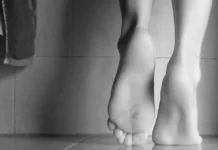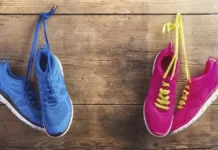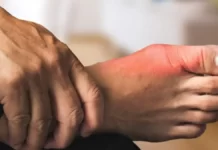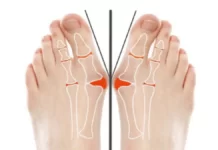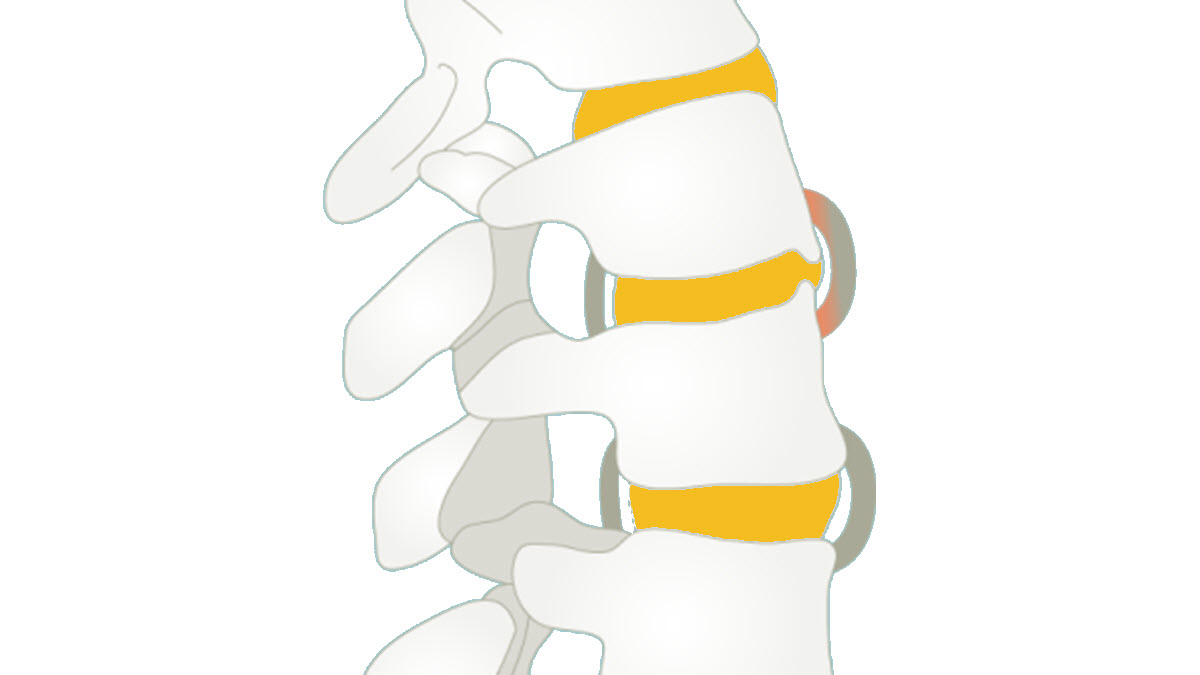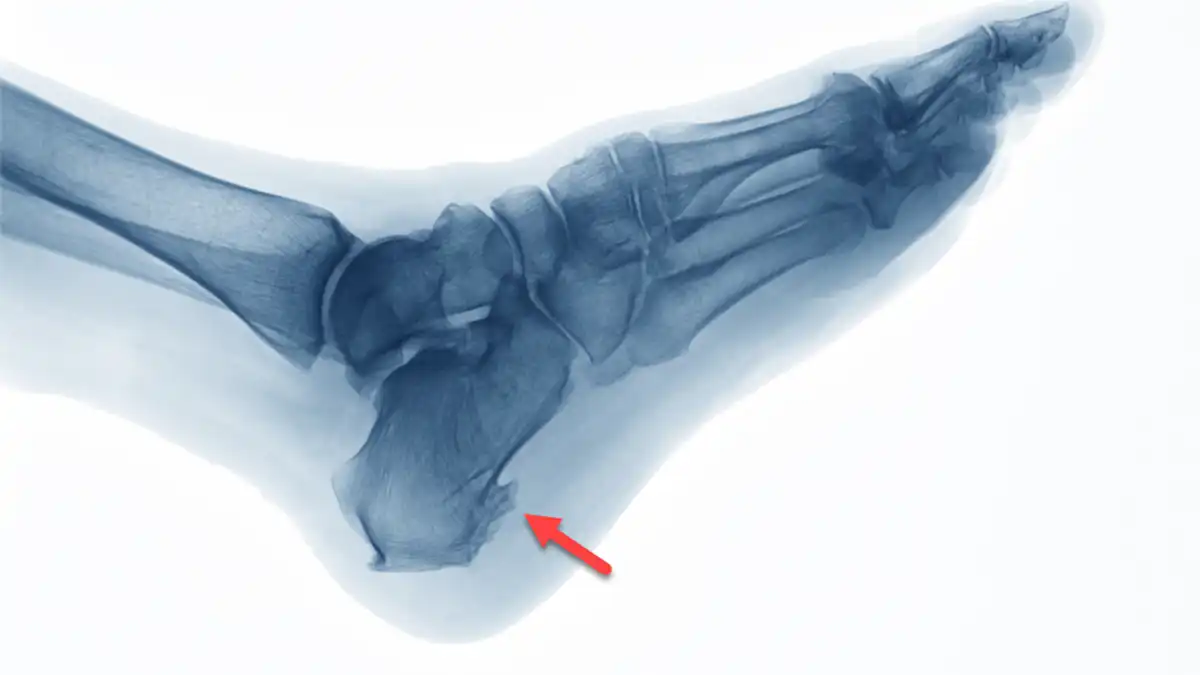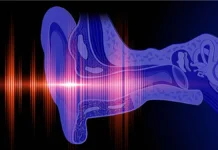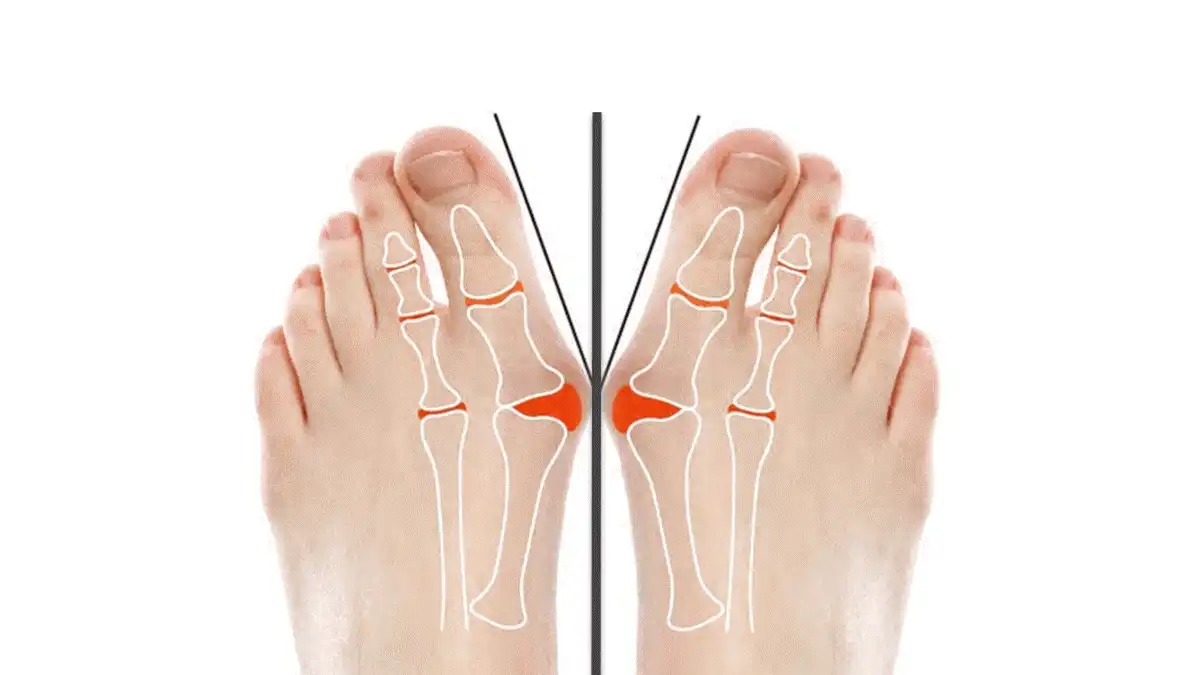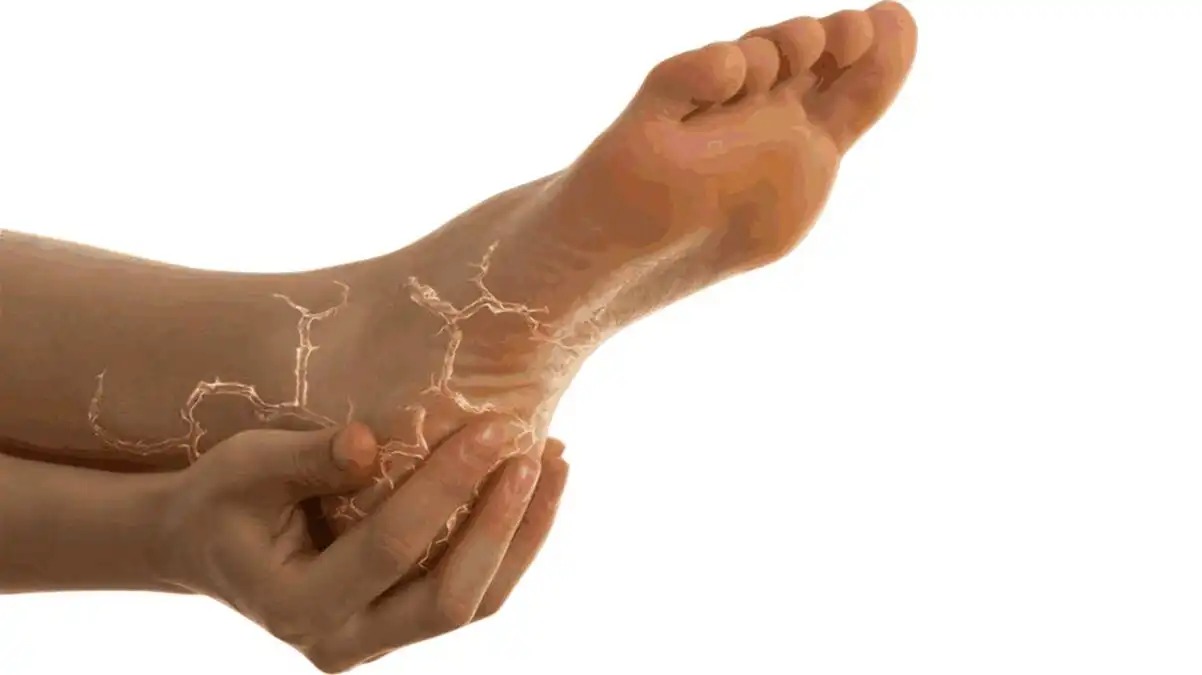The biomechanics of the foot during walking is a complex process that involves a series of coordinated movements to ensure efficient and balanced locomotion.
Introduction
The biomechanics of the foot during walking is a complex dance between forces, joints and muscles that harmonize to enable fluid and efficient movement. Every step we take involves a series of sophisticated biomechanical mechanisms that support the body’s weight, absorb shock, and propel the body forward.
When the foot makes contact with the ground, the heel is usually the first part to contact the ground, absorbing the initial impact. This phase, known as heel contact, is followed by rolling the foot forward, involving the midfoot and ultimately the toes, allowing for a smooth transition of body weight.
During this transition, the arch plays an essential role in absorbing shock forces. The arch, formed by the bones and ligaments of the foot, acts like a spring, absorbing energy and providing dynamic support while walking. Any imbalance in the biomechanics of the arch can contribute to problems such as excessive pronation or supination, affecting the distribution of forces across the foot.
The role of the foot muscles is also crucial in the biomechanics of walking. Intrinsic and extrinsic muscles work together to stabilize joints, provide proper balance, and propel the body forward. Strong, well-coordinated muscles contribute to efficient gait and the prevention of biomechanical disorders of the foot.
In summary, foot biomechanics during walking are a complex orchestration of movements, joints, and forces. Understanding these mechanisms allows us to appreciate the importance of a balanced gait and to become aware of the factors that can influence foot health. Close attention to foot biomechanics can be crucial to maintaining functionality, preventing injury, and promoting comfortable, natural walking.
The Importance of Foot Biomechanics in Walking
Foot biomechanics play a crucial role in walking, as they directly influence stability, balance and efficiency of movement. Biomechanics studies the forces and movements of the body, particularly how anatomical structures interact during physical activities, such as walking. Here are some key points highlighting the importance of foot biomechanics in this context:
- Stability and Balance: The biomechanics of the foot contribute to stability and balance while walking. Precise joint movements, coordinated muscle activation and arch function are key to maintaining a stable posture while walking.
- Weight Distribution: The forces exerted on the foot during walking are distributed in a specific way to absorb shock and support the weight of the body. The arches of the foot, particularly the arch of the foot, play a crucial role in this weight distribution.
- Shock Absorption: When the foot strikes the ground while walking, the biomechanics of the foot are responsible for shock absorption. This involves effective absorption of impact forces to prevent trauma to joints, bones and soft tissues.
- Propulsion: Foot biomechanics contribute to the propulsion phase, when the foot pushes against the ground to move the body forward. Coordinated movements of the muscles and joints of the foot are essential to generate effective propulsion.
- Analysis of Gait Patterns: The biomechanics of the foot makes it possible to analyze gait patterns to detect possible anomalies. This can include issues such as excessive pronation, supination, stride variations, and other factors that can contribute to injury or discomfort.
- Injury Prevention: Healthy foot biomechanics help prevent walking-related injuries. Healthcare professionals often use biomechanical knowledge to design interventions such as foot orthotics, muscle strengthening exercises, and advice on choosing appropriate footwear.
- Performance Improvement: In sports, the biomechanics of the foot are also crucial to optimize performance. Understanding how the foot interacts with the ground, how it absorbs energy and generates power can influence running techniques and other sports movements.
- Shoe Design: Shoe designers use the biomechanics of the foot to create shoes that provide adequate support, cushioning and stability while walking. Features such as sole, heel angle and arch support are taken into account.
In-Depth Understanding of Podal Biomechanics
Podal biomechanics, the study of the mechanical movements of the foot, plays a crucial role in our overall musculoskeletal health and functionality. The foot, with its intricate structure of bones, muscles, tendons, and ligaments, serves as the foundation for the body’s mobility. Understanding the biomechanics of the foot is essential for diagnosing and treating a range of conditions that can affect not only the foot but also the entire kinetic chain, including the ankles, knees, hips, and spine.
The foot is composed of 26 bones, 33 joints, and over 100 muscles, tendons, and ligaments. These components work together to perform two primary functions: weight-bearing and propulsion. During walking or running, the foot undergoes a complex sequence of movements involving various phases: heel strike, midstance, and toe-off. Each phase requires precise coordination and alignment of the foot’s structures to distribute forces efficiently and maintain balance.
At heel strike, the foot first contacts the ground. The heel acts as a shock absorber, and the foot pronates slightly to adapt to the surface and distribute impact forces. Overpronation, an excessive inward roll of the foot, can lead to excessive stress on the medial (inner) side of the foot and lower leg, contributing to conditions such as plantar fasciitis, shin splints, and knee pain. Conversely, underpronation (supination), where there is insufficient inward roll, can lead to stress on the lateral (outer) side of the foot and insufficient shock absorption, increasing the risk of stress fractures and ankle sprains.
The midstance phase follows heel strike, where the foot is flat on the ground and supports the body’s weight. During this phase, the foot must be stable and capable of bearing the body’s load. The arch of the foot plays a significant role here, acting as a spring to store and release energy. Conditions such as flat feet (pes planus) or high arches (pes cavus) can disrupt this mechanism, leading to inefficient energy transfer and increased strain on the foot’s structures.
Finally, the toe-off phase involves the foot pushing off the ground to propel the body forward. During this phase, the plantar fascia, a thick band of tissue running along the bottom of the foot, and the calf muscles generate the necessary force for propulsion. Efficient toe-off requires strong and flexible muscles and tendons. Tight calf muscles or Achilles tendonitis can hinder this process, reducing propulsion efficiency and increasing the risk of injury.
Podal biomechanics is not only about the movements of the foot but also its interaction with the ground and the rest of the body. External factors such as footwear and walking surfaces can significantly impact foot biomechanics. Shoes that provide adequate support and cushioning can help maintain proper foot alignment and function, while inadequate footwear can exacerbate existing biomechanical issues or create new ones.
Moreover, the foot’s alignment and function can influence and be influenced by the biomechanics of the entire lower limb and spine. For instance, excessive pronation can cause internal rotation of the tibia and femur, leading to misalignment and increased stress on the knee joint. Similarly, issues in the hip or lower back can alter gait mechanics, placing additional stress on the foot.
In conclusion, an in-depth understanding of podal biomechanics is essential for diagnosing, treating, and preventing various musculoskeletal conditions. By examining the intricate movements and functions of the foot and their interaction with the rest of the body, healthcare professionals can develop targeted interventions to improve foot function, enhance overall mobility, and reduce the risk of injury. This holistic approach to foot biomechanics underscores the importance of maintaining foot health as a cornerstone of overall physical well-being.
Foot biomechanics focuses on the study of the mechanisms and movements involved in the structure and function of the feet. This discipline provides an in-depth understanding of how different parts of the foot interact to support body weight, absorb shock, facilitate mobility and influence overall body posture. Here are some key aspects of foot biomechanics:
- Foot Anatomy: Foot biomechanics begins with a thorough understanding of the anatomy of the foot, which is a complex structure made up of 26 bones, numerous joints, muscles, ligaments and tendons. Each part of the foot has a specific role in weight distribution, shock absorption and propulsion.
- Arches of the Foot: The arches of the foot, including the longitudinal and transverse arch, play a crucial role in biomechanics. They act as natural shock absorbers and contribute to stability and balance while walking.
- Foot Movements: Podal biomechanics examines the different movements of the foot, such as dorsiflexion (when the foot lifts upward), plantarflexion (when the foot points downward), pronation (inward movement) and supination (outward movement).
- Walking and Running Analysis: Foot biomechanics professionals often use technologies such as videography, podometry, pressure sensors and other tools to analyze walking and running. This helps detect abnormalities in the gait pattern, such as excessive pronation or supination.
- Forces and Pressures: The study of foot biomechanics also involves understanding the forces and pressures exerted on the foot during the different phases of walking. This includes initial impact, foot roll, and propulsion.
- Foot Pathologies: Common foot problems, such as flat feet, pes cavus, bunions, heel spurs, and other pathologies, are often analyzed from the perspective of foot biomechanics. Understanding how these conditions affect biomechanics allows for the design of appropriate interventions.
- Orthotics and Shoes: Foot biomechanics plays an essential role in the design and prescription of plantar orthoses and suitable shoes. These interventions aim to correct biomechanical abnormalities and relieve pain or discomfort.
- Rehabilitation and Therapy: In the event of foot problems, foot biomechanics can guide rehabilitation and physical therapy programs. This may include specific exercises to strengthen the foot muscles, improve flexibility and correct muscle imbalances.
Common Biomechanical Challenges Faced When Walking
Walking, often perceived as a simple and automatic activity, involves complex biomechanical processes that can present various challenges. These challenges can affect anyone, regardless of age or fitness level, and understanding them is essential for improving walking efficiency and reducing injury risk. Several common biomechanical issues encountered while walking include improper gait patterns, muscle imbalances, joint misalignments, and the impact of external factors such as footwear and terrain.
One of the primary biomechanical challenges in walking is an improper gait pattern. The gait cycle involves two main phases: the stance phase, where the foot is in contact with the ground, and the swing phase, where the foot moves forward through the air. Each phase requires precise coordination of muscles and joints. Common gait abnormalities, such as overpronation (excessive inward roll of the foot) or supination (outward roll), can lead to uneven distribution of forces through the lower extremities. This can cause discomfort and contribute to conditions like plantar fasciitis, shin splints, and knee pain. Identifying and correcting these gait issues through professional assessment and targeted exercises can enhance walking efficiency and reduce the risk of injury.
Muscle imbalances also pose significant challenges. For instance, weak hip abductors and extensors can cause the pelvis to tilt or rotate abnormally during walking, affecting the alignment and movement of the legs. This imbalance can result in compensatory movements that place undue stress on other muscles and joints, leading to pain and injury over time. Strengthening weak muscles and stretching tight ones can help restore balance and improve walking mechanics. A comprehensive exercise program that targets core stability, hip strength, and flexibility is often beneficial.
Joint misalignments, particularly in the lower back, hips, knees, and ankles, are another common biomechanical issue. Misalignments can be caused by congenital factors, poor posture, previous injuries, or repetitive strain. For example, an anterior pelvic tilt, where the pelvis tips forward, can affect the curvature of the spine and the positioning of the legs, altering the normal gait pattern. Correcting joint misalignments often involves a combination of manual therapy, corrective exercises, and postural training. An osteopath or physical therapist can provide personalized interventions to address these issues and promote better alignment and movement.
External factors, such as footwear and terrain, significantly influence walking biomechanics. Inappropriate footwear, such as shoes that lack proper arch support or cushioning, can exacerbate existing gait issues or create new ones. Walking on hard or uneven surfaces can also affect the distribution of forces through the legs and spine, potentially leading to discomfort and injury. Selecting appropriate footwear that offers adequate support and cushioning, along with being mindful of the walking surface, can mitigate these external challenges. Custom orthotics can provide additional support and alignment correction for those with specific biomechanical needs.
The cumulative effect of these biomechanical challenges can lead to a cycle of pain and dysfunction if not addressed. Early intervention and a proactive approach to identifying and correcting biomechanical issues are crucial. Regular assessments by healthcare professionals, such as osteopaths, physical therapists, or podiatrists, can help detect and manage these challenges effectively. By understanding and addressing the common biomechanical issues faced when walking, individuals can enhance
- Posture and Balance Issues: Maintaining a stable and balanced posture is essential for effective walking. Posture problems can result from muscular weaknesses, imbalances, neurological disorders or other factors.
- Joint Pain: Joint pain, whether due to arthritis, injuries or other problems, can interfere with smooth movement while walking.
- Gait Disorders: Certain neurological disorders, such as Parkinson’s disease, stroke or spinal cord injury, can impair the coordination of movements while walking.
- Flat Feet or Hollow Feet: Variations in the arch of the foot can affect the distribution of body weight during walking, leading to problems such as excessive pronation (flat foot) or excessive supination (cavus foot).
- Muscle Imbalance: An imbalance between agonist and antagonist muscles can influence joint movement during walking, leading to compensations that can be detrimental in the long term.
- Restricted Range of Motion: Limitations in the range of motion of joints, whether at the hips, knees or ankles, can compromise normal walking.
- Age-Related Gait Impairments: Aging can lead to loss of muscle mass, decreased bone density, and other anatomical changes that can affect gait biomechanics.
- Coordination Problems: Impaired coordination between the lower extremities can lead to unsteady walking and increase the risk of falls, particularly in older adults.
- Proprioception Problems: Disorders of proprioception, which is the body’s ability to perceive its position in space, can influence walking by compromising the perception and correction of imbalances.
- Changes in Weight Distribution: Changes in body weight distribution, such as obesity, can place additional strain on joints and muscles, thereby affecting walking.
Role of Osteopathy in the Optimization of Foot Biomechanics
Osteopathy can play an important role in optimizing the biomechanics of the foot by addressing structural and functional imbalances of the body as a whole. Osteopaths work based on the idea that the general health of the body is closely linked to the normal function of body structures, including the feet. Here is how osteopathy can help optimize the biomechanics of the foot:
- Comprehensive Assessment: Osteopaths perform a comprehensive assessment of the patient, taking into account medical history, lifestyle habits, and performing a thorough physical examination. This often includes assessing the biomechanics of the foot, observing posture, gait, movements and identifying possible imbalances.
- Correction of Imbalances: Osteopathy aims to restore the structural and functional balance of the body. By working on joints, muscles, ligaments and other tissues, an osteopath can help correct imbalances that affect the biomechanics of the foot. This may include joint adjustments, muscle release techniques, and other gentle manipulations.
- Treatment of Mobility Restrictions: Mobility restrictions in the joints and soft tissues can compromise the normal biomechanics of the foot. Osteopathy aims to restore natural mobility by releasing tension and improving the flexibility of joints and tissues.
- Relief of Muscle Tension: Excessive muscle tension can influence the biomechanics of the foot. Osteopathy uses muscle release techniques to reduce unnecessary tension and improve muscle coordination while walking.
- Improved Circulation: Adequate blood circulation is essential for healthy tissues, including those of the foot. Osteopathy can promote circulation by eliminating vascular restrictions and improving tissue mobility.
- Lifestyle Advice: Osteopaths can provide advice on lifestyle changes, including recommendations for specific exercises to strengthen foot muscles, improve posture and support overall biomechanics.
- Integration with Other Approaches to Care: Osteopathy can be integrated with other approaches to care, such as physiotherapy, podiatry and chiropractic, to provide a holistic approach to the management of foot biomechanics problems.
How Osteopathy Can Help Correct Biomechanical Anomalies of the Foot
- In-Depth Assessment: The osteopath generally begins with an in-depth assessment to understand the patient’s medical history, observe posture, evaluate gait and identify possible biomechanical abnormalities of the foot. This may include joint mobility tests, musculature assessments, and other observational techniques.
- Muscle Relaxation: Excessive muscle tension can contribute to biomechanical abnormalities of the foot. The osteopath uses muscle relaxation techniques to reduce tension and promote flexibility of the muscles involved in the movement of the foot.
- Posture Correction: Osteopathy can help correct posture abnormalities that can influence the biomechanics of the foot. Postural adjustments and guidance can be provided to improve overall body alignment.
- Arch Support: If problems such as flat feet or pes cavus are present, the osteopath may recommend techniques to support the arch. This may include advice on choosing appropriate footwear or recommending personalized foot orthotics.
- Rehabilitation and Exercises: The osteopath can recommend specific exercises to strengthen the muscles of the foot, improve stability and correct muscular imbalances that contribute to biomechanical abnormalities.
- Pain Management: In cases of pain associated with biomechanical abnormalities of the foot, the osteopath can use techniques to relieve pain, such as massage, stretching and advice on relief modalities.
- Integration with Other Health Professionals: Osteopathy can be integrated with other care approaches, such as podiatry, physiotherapy or chiropractic, to provide a comprehensive approach to the correction of biomechanical abnormalities of the foot.
Factors That Affect Foot Biomechanics and Their Impact on Health
Foot biomechanics, the study of the mechanical function of the foot, is influenced by various factors that can significantly impact overall health. These factors can lead to a range of musculoskeletal issues if not properly managed. Understanding these influences is crucial for diagnosing, treating, and preventing foot-related problems. Here are some key factors that affect foot biomechanics and their health impacts:
List of keys factors
Far far away, behind the word mountains, far from the countries Vokalia and Consonantia, there live the blind texts. Separated they live in Bookmarksgrove right at the coast of the Semantics, a large language ocean.
1. Foot Structure and Alignment
The structural alignment of the foot, including the arch height and toe alignment, plays a pivotal role in foot biomechanics. Common structural variations include:
- Flat Feet (Pes Planus): Characterized by low or no arch, leading to overpronation. This condition can cause increased stress on the medial side of the foot and lower leg, contributing to conditions like plantar fasciitis, shin splints, and knee pain.
- High Arches (Pes Cavus): High arches can result in underpronation, where the foot does not roll inward enough. This can cause poor shock absorption, leading to stress fractures, ankle sprains, and metatarsalgia.
2. Muscle Strength and Flexibility
Muscle strength and flexibility, particularly in the calf muscles, Achilles tendon, and intrinsic foot muscles, are crucial for maintaining proper foot function:
- Weakness: Weakness in these muscles can lead to poor foot stability and inefficient gait, increasing the risk of injuries.
- Tightness: Tight calf muscles or Achilles tendon can limit ankle dorsiflexion, affecting the toe-off phase of gait and increasing the risk of conditions like Achilles tendonitis.
3. Footwear
The type of footwear worn can significantly influence foot biomechanics:
- Supportive Shoes: Properly fitting, supportive shoes help maintain alignment and provide necessary cushioning, reducing stress on the foot structures.
- Inadequate Footwear: Shoes that lack support or are ill-fitting can exacerbate biomechanical issues, leading to problems like bunions, hammertoes, and plantar fasciitis.
4. Activity Level and Type
Different activities place varying demands on the foot, affecting its biomechanics:
- High-Impact Activities: Running, jumping, and other high-impact activities increase the stress on the foot and can lead to overuse injuries like stress fractures and tendonitis.
- Sedentary Lifestyle: Lack of activity can lead to muscle weakness and stiffness, contributing to poor foot function and alignment issues.
5. Body Weight
Body weight exerts a significant influence on foot biomechanics:
- Excess Weight: Increases the load on the foot, leading to greater stress on the arches, plantar fascia, and joints. This can result in conditions such as plantar fasciitis, arthritis, and heel spurs.
- Underweight: While less common, being significantly underweight can also affect foot health by reducing the cushioning and support that body fat provides, potentially leading to bone injuries.
6. Age
Aging affects foot biomechanics in several ways:
- Degenerative Changes: Age-related changes such as reduced joint mobility, loss of muscle mass, and decreased bone density can impair foot function and increase the risk of conditions like osteoarthritis.
- Cumulative Stress: Years of walking, running, and other activities contribute to wear and tear on the foot structures.
7. Previous Injuries
Past injuries can have a lasting impact on foot biomechanics:
- Scar Tissue: Previous injuries can lead to scar tissue formation, which may alter the normal movement patterns of the foot.
- Compensatory Mechanisms: To avoid pain or discomfort, individuals may adopt compensatory gait patterns, leading to secondary issues in the foot, ankle, knee, or hip.
8. Genetics
Genetic factors play a role in determining foot structure and susceptibility to certain conditions:
- Inherited Traits: Conditions such as flat feet, high arches, and certain deformities can be inherited, predisposing individuals to biomechanical problems.
9. Surface Type
The type of surface you walk or run on can influence foot biomechanics significantly:
- Hard Surfaces: Walking or running on hard surfaces like concrete can increase the impact on the feet, leading to stress-related injuries such as stress fractures and plantar fasciitis.
- Soft Surfaces: While softer surfaces like grass or sand provide more cushioning, they can also cause instability, increasing the risk of ankle sprains and other injuries.
10. Gait Patterns
An individual’s gait, or the manner in which they walk, affects foot biomechanics:
- Overpronation: Excessive inward rolling of the foot can lead to increased stress on the inner foot and ankle, contributing to issues such as shin splints and knee pain.
- Underpronation (Supination): Insufficient inward rolling can result in poor shock absorption, causing stress on the outer foot and increasing the risk of injuries like stress fractures and ankle sprains.
11. Neurological Conditions
Neurological conditions can alter foot biomechanics by affecting muscle control and sensation:
- Peripheral Neuropathy: Conditions like diabetes can cause nerve damage, leading to reduced sensation and altered gait, increasing the risk of foot ulcers and deformities.
- Stroke or Cerebral Palsy: These conditions can lead to muscle weakness or spasticity, significantly affecting gait and foot alignment.
12. Inflammatory Conditions
Inflammatory conditions can affect the tissues in the foot, impacting biomechanics:
- Rheumatoid Arthritis: This autoimmune condition can cause joint inflammation and deformities, leading to altered gait and increased risk of secondary problems in the knees, hips, and back.
- Gout: Acute attacks of gout can cause severe pain and swelling in the foot, particularly the big toe, leading to temporary or chronic alterations in gait.
13. Hormonal Changes
Hormonal fluctuations can influence foot biomechanics:
- Pregnancy: Hormonal changes during pregnancy can lead to increased laxity in ligaments, causing changes in foot structure and gait, often resulting in overpronation and flat feet.
- Menopause: Decreased estrogen levels can affect bone density and muscle strength, potentially impacting foot health and increasing the risk of conditions like osteoporosis and plantar fasciitis.
14. Hydration and Nutrition
Adequate hydration and nutrition play roles in maintaining healthy tissues and joints:
- Dehydration: Lack of proper hydration can lead to muscle cramps and decreased elasticity in tissues, affecting foot function and increasing the risk of injury.
- Nutritional Deficiencies: Deficiencies in vitamins and minerals, such as vitamin D and calcium, can affect bone and muscle health, leading to weakened structures and impaired foot biomechanics.
15. Custom Orthotics
The use of custom orthotics can significantly influence foot biomechanics:
- Support and Alignment: Custom orthotics can provide support and correct alignment issues, helping to redistribute pressure across the foot and alleviate pain caused by biomechanical imbalances.
- Incorrect Use: However, improper use or poorly fitted orthotics can exacerbate existing problems or create new ones, emphasizing the need for professional fitting and guidance.
16. Occupational Factors
Certain occupations require prolonged standing, walking, or specific footwear, impacting foot biomechanics:
- Prolonged Standing: Jobs that require long periods of standing can lead to foot fatigue, overpronation, and conditions like plantar fasciitis and varicose veins.
- Safety Footwear: Occupations requiring safety footwear, such as steel-toe boots, can lead to restricted foot movement and increased pressure on certain areas, causing discomfort and potential long-term biomechanical issues.
17. Environmental Factors
Environmental conditions can also affect foot biomechanics:
- Temperature Extremes: Extreme cold can lead to reduced circulation and stiffness in the feet, affecting mobility and increasing the risk of injuries. Extreme heat can cause swelling and discomfort, impacting gait.
- Humidity: High humidity can lead to excessive sweating, increasing the risk of blisters and fungal infections, which can affect comfort and foot function.
18. Psychological Stress
Stress can manifest physically and affect foot biomechanics:
- Tension: Psychological stress can lead to increased muscle tension and altered posture, affecting the way weight is distributed across the feet and potentially leading to pain and discomfort.
- Fatigue: Mental fatigue can contribute to poor coordination and balance, increasing the risk of foot and ankle injuries.
19. Genetic and Developmental Conditions
Certain genetic and developmental conditions can impact foot structure and function:
- Ehlers-Danlos Syndrome: This connective tissue disorder can lead to hypermobility and instability in the joints, affecting foot biomechanics and increasing the risk of injuries.
- Marfan Syndrome: Another connective tissue disorder that can result in flat feet and other structural abnormalities, impacting gait and overall foot health.
Obesity
Excess body weight significantly impacts foot biomechanics:
- Increased Pressure: Higher body weight increases the load on the feet, leading to greater stress on joints, muscles, and ligaments. This can cause conditions such as plantar fasciitis, heel spurs, and arthritis.
- Altered Gait: Obesity can change gait patterns to compensate for the added weight, often leading to overpronation or other biomechanical issues that can affect the knees, hips, and lower back.
21. Footwear Choices
The type and fit of footwear play a crucial role in foot biomechanics:
- High Heels: Wearing high heels can shift the body’s weight forward, increasing pressure on the forefoot and toes, leading to conditions like bunions, hammertoes, and metatarsalgia.
- Improper Fit: Shoes that are too tight or too loose can cause friction, leading to blisters, calluses, and other foot deformities, while also altering natural gait patterns.
22. Age-Related Changes
Aging brings about changes that affect foot biomechanics:
- Degenerative Changes: Over time, the cartilage in the joints may wear down, leading to arthritis and reduced joint mobility.
- Reduced Elasticity: Aging reduces the elasticity of tendons and ligaments, making the feet more susceptible to injuries and changes in gait.
23. Foot Structure and Shape
Intrinsic foot structures and shapes influence biomechanics:
- Flat Feet (Pes Planus): Flat feet can cause overpronation, leading to strain on the foot’s arch and potential pain in the knees and lower back.
- High Arches (Pes Cavus): High arches can result in underpronation, reducing shock absorption and increasing the risk of stress fractures and ankle sprains.
24. Exercise and Physical Activity
The type and amount of physical activity affect foot health:
- High-Impact Activities: Running and jumping can place excessive stress on the feet, leading to injuries such as stress fractures, Achilles tendonitis, and plantar fasciitis.
- Lack of Activity: Sedentary lifestyles can weaken foot muscles and reduce joint flexibility, increasing the risk of injuries when activity levels do increase.
25. Occupational Hazards
Certain jobs pose specific risks to foot health:
- Repetitive Movements: Jobs requiring repetitive movements can lead to overuse injuries like tendonitis.
- Heavy Lifting: Occupations involving heavy lifting can place additional strain on the feet and lower extremities, potentially leading to biomechanical imbalances.
26. Chronic Conditions
Chronic health conditions can impact foot biomechanics:
- Diabetes: Diabetes can lead to peripheral neuropathy and reduced circulation, which can cause foot deformities and increase the risk of ulcers and infections.
- Cardiovascular Disease: Poor circulation associated with cardiovascular disease can lead to swelling and discomfort in the feet, affecting gait and foot health.
27. Posture and Body Alignment
Overall body posture and alignment influence how weight is distributed across the feet:
- Spinal Alignment: Misalignment in the spine can affect the distribution of weight and stress on the feet, leading to compensatory changes in gait and potential foot pain.
- Pelvic Alignment: Pelvic tilt or rotation can cause uneven leg lengths, leading to altered gait patterns and increased stress on one foot over the other.
28. Muscle Imbalances
Imbalances in muscle strength and flexibility affect foot mechanics:
- Tight Calf Muscles: Tightness in the calf muscles can limit ankle mobility, leading to compensatory changes in foot biomechanics and increasing the risk of plantar fasciitis and Achilles tendonitis.
- Weak Foot Muscles: Weakness in the intrinsic foot muscles can reduce arch support, contributing to conditions like flat feet and increasing the risk of overuse injuries.
29. Genetic Predispositions
Genetic factors can predispose individuals to certain biomechanical issues:
- Inherited Foot Shape: Genetic traits such as foot shape, arch height, and joint flexibility can influence foot biomechanics and the likelihood of developing related conditions.
- Familial Tendencies: Certain families may have a predisposition to conditions like bunions or hammertoes, impacting overall foot health and biomechanics.
Impact on Health
Poor foot biomechanics can lead to a cascade of musculoskeletal issues beyond the foot itself, affecting overall health and quality of life:
- Knee Pain: Misalignment or improper function of the foot can lead to altered knee mechanics, increasing the risk of conditions like patellofemoral pain syndrome and osteoarthritis.
- Hip and Lower Back Pain: Compensatory changes in gait due to foot issues can cause abnormal stress on the hips and lower back, contributing to pain and discomfort in these areas.
- Postural Problems: Foot biomechanics can affect overall posture, potentially leading to a range of postural issues and associated discomfort or pain.
Tips for Maintaining Healthy Foot Biomechanics
Maintaining healthy foot biomechanics is essential to preventing foot problems, pain and injuries. Here are some tips to promote health and good foot biomechanics:
- Wearing Appropriate Shoes: Choose shoes that provide good arch support, proper fit and shock absorption. Sports shoes should be appropriate for the activity being performed.
- Maintaining a Healthy Body Weight: Maintaining a healthy body weight reduces pressure on the feet, helping to prevent problems such as flat feet and joint pain.
- Warm Up Before Exercise: Before exercising, warm up properly to prepare the muscles, ligaments and joints of the foot for physical activity.
- Muscle Strengthening Exercises: Incorporate specific muscle strengthening exercises for the muscles of the foot and lower limbs. This may include stretching, heel raises, and toe flexion and extension exercises.
- Maintaining Good Posture: Adopt correct posture when walking, running and standing. Good posture helps maintain proper foot biomechanics.
- Regular Stretching: Practice regular stretching to maintain flexibility in the muscles, tendons and ligaments of the foot.
- Control of Walking Terrain: Be aware of the surface you are walking on. Avoid uneven, rough or slippery surfaces whenever possible.
- Stress Management: Stress can affect the biomechanics of the foot by increasing muscle tension. Practice stress management techniques, such as meditation or yoga.
- Changing Work Shoes: If you spend long hours on your feet at work, opt for comfortable and appropriate shoes to avoid fatigue and strain.
- Regular Consultation with a Health Professional: Schedule regular consultations with a health professional, such as a podiatrist or osteopath, to monitor the health of your feet and to quickly detect any emerging problems.
- Disease Management: If you have underlying medical conditions such as arthritis, diabetes or other health problems, follow your healthcare professional’s recommendations to manage these conditions and minimize their impact on the biomechanics of the condition. foot.
- Changing Running Shoes: If you run, replace your running shoes regularly to ensure proper cushioning and support.
- Avoid Walking Barefoot on Hard Surfaces: Avoid walking barefoot on hard surfaces, especially if you have arch problems or other biomechanical abnormalities.
Link Between Back Pain and Biomechanical Abnormalities of the Foot
The link between back pain and biomechanical abnormalities of the foot is well established. Foot biomechanics influence posture and body alignment, and abnormalities in this region can lead to compensations elsewhere in the body, including the spine. Here’s how biomechanical abnormalities in the foot can contribute to back pain:
- Postural Imbalance: The feet are the basis of support for the body. Biomechanical abnormalities, such as flat feet or excessive pronation, can lead to postural imbalance. To maintain balance, the body may adopt a compensatory posture, which can affect the spine and lead to back pain.
- Impact on Gait and Walking Posture: Biomechanical abnormalities of the foot impact the way a person walks. Impaired gait can cause body weight to be distributed unevenly and put additional pressure on parts of the spine, contributing to back pain.
- Changes in Spinal Curvature: Abnormalities of the foot can influence how body weight is distributed along the spine. This can contribute to changes in the natural curvature of the spine, such as excessive lumbar lordosis or increased thoracic kyphosis, thus leading to back pain.
- Compensatory Muscle Tensions: To compensate for biomechanical abnormalities in the foot, the back muscles can become overloaded or underused, resulting in unbalanced muscle tensions. These muscle tensions can contribute to back pain.
- Stability and Proprioception Problems: Biomechanical abnormalities of the foot can affect the overall stability of the body. Impaired stability can increase the risk of spinal injuries and contribute to back pain.
- Changes in Perceived Leg Length: Biomechanical abnormalities of the foot, such as excessive pronation, can influence how a person perceives their leg length. This can lead to pelvic tilt and imbalances that affect the spine.
- Joint Mobility Complications: Biomechanical abnormalities of the foot can cause restrictions in joint mobility, thereby affecting flexibility and overall movement of the body, including the spine.
Incorporating Strengthening Exercises into Osteopathic Treatment for Foot Biomechanics
Incorporating strengthening exercises into osteopathic treatment for foot biomechanics may be beneficial for strengthening foot muscles, improving stability, and promoting better overall function. These exercises aim to support the work of the osteopath by strengthening muscular structures and contributing to the correction of biomechanical imbalances. Here are some examples of strengthening exercises that can be integrated into osteopathic treatment for foot biomechanics:
- Heel Elevations:
- Starting position: Stand with feet shoulder-width apart.
- Action: Slowly lift your heels off the floor while standing on your tiptoes, then slowly lower yourself back down.
- Objective: Strengthen the calf muscles.
- Toe Flexions:
- Starting position: Sit with your legs extended in front of you.
- Action: Slowly flex your toes upwards, then lower them back down.
- Objective: Strengthen the muscles of the arch of the foot and improve the flexibility of the toes.
- Dome Exercises:
- Starting position: Place a balance ball or dome under the arch of your foot.
- Action: Exert pressure on the ball or dome by alternating flexion and extension movements of the toes.
- Objective: Strengthen the intrinsic muscles of the foot and improve balance.
- Strengthening the Intrinsics of the Foot:
- Starting position: Sitting or standing.
- Action: Grasp an object with your toes, then release.
- Objective: Strengthen the small muscles located inside the foot.
- Calf Stretches:
- Starting position: Facing a wall, front foot bent, back foot straight.
- Action: Lean forward while keeping the heel of the back foot on the ground.
- Objective: Stretch the calf muscle to improve flexibility.
- Walk on Heels:
- Starting position: Standing.
- Action: Walk on your heels, lifting your toes with each step.
- Objective: Strengthen the anterior muscles of the foot and improve balance.
- Ankle Rotation Exercises:
- Starting position: Sitting or standing.
- Action: Make circular movements with the ankle in both directions.
- Objective: Improve ankle mobility and strengthen surrounding muscles.
- Proprioception exercises:
- Starting position: Standing on an unstable surface (like an air cushion).
- Action: Maintain balance by distributing the weight of the body on the feet.
- Objective: Improve proprioception and stability.
Biomechanics of the foot during walking
- Initial Contact: When the heel touches the ground, this is the initial contact phase. The foot adapts to the surface, absorbing the initial impact.
- Pre-shot: The foot rolls slightly inward (pronation) to allow optimal shock absorption. The ankle flexes to allow a smooth transition from initial contact to propulsion.
- Propulsion: The midsection of the foot begins to roll outward (supination), creating a solid surface to push against the ground. The calf muscles (especially the triceps surae muscle) are activated to propel the body forward.
- Toe Lift: The toes finally leave the ground, and the foot tilts inward, allowing the body to pass over the moving foot.
- Midstance: The weight of the body is supported by the arch of the foot, and the foot is stably positioned to support the load during the support phase.
- Heel Release: The heel begins to lift off the ground, marking the transition to the swing phase.
- Final Drive: The toes push firmly against the ground to generate a final push that helps move the body forward.
- Swing: The foot lifts completely off the ground, allowing the lower limb to swing forward for the next step.

Biomechanics of the pelvis when walking
The biomechanics of the pelvis during walking is a crucial aspect of human movement, as the pelvis plays an essential role in the body’s stability, balance, and coordination during this activity. Here are some key points regarding the biomechanics of the pelvis when walking:
- Pelvic Tilt: During walking, the pelvis undergoes a series of complex movements. As the foot moves forward, the pelvis tilts forward to the side opposite the lifting leg. This movement contributes to balance and propulsion of the body forward.
- Rotation of the Pelvis: The pelvis also undergoes rotations during walking. At the moment of contact of the heel with the ground, the pelvis on the supporting side rotates backwards, while on the opposite side it rotates forwards. These rotations contribute to the stability and efficiency of the movement.
- Elevation and Lowering of the Pelvis: The pelvis alternately raises and lowers during walking. When one leg is in the support phase, the pelvis on the side of the supporting leg elevates slightly. During the swing phase, as the leg raises, the pelvis lowers on the opposite side.
- Role of the Pelvic Muscles: The pelvic muscles, including the gluteal muscles and the pelvic girdle muscles, are heavily used during walking to stabilize the pelvis and promote coordinated movement. A muscular imbalance in this region can affect the biomechanics of the pelvis and contribute to walking problems.
- Pelvic Alignment: Proper pelvic alignment is crucial to maintaining healthy biomechanics. Structural imbalances, such as leg length inequalities or postural abnormalities, can influence pelvic alignment and impact gait.
- Impact on the Spine: The biomechanics of the pelvis are closely linked to those of the spine. Pelvic movements during walking can influence spinal posture, and abnormalities in pelvic biomechanics can contribute to back problems.
- Gait Analysis: Healthcare professionals, such as physiotherapists and osteopaths, can use gait analysis techniques to assess the biomechanics of the pelvis. This may include visual observation, use of motion sensors and other tools to identify possible imbalances or anomalies.
- Impacts on the Lower Extremities: Pelvic movements during walking have a direct impact on the joints and muscles of the lower extremities, including the hips, knees and ankles. Altered pelvic biomechanics can contribute to problems in these areas.
In summary, pelvic biomechanics during walking is a complex and coordinated process that plays an essential role in human locomotion. Abnormalities in the biomechanics of the pelvis can impact the stability, balance and overall health of the musculoskeletal system. Assessment and treatment by specialized healthcare professionals may be necessary to correct imbalances and optimize pelvic biomechanics.
Biomechanics of the iliotibial band during walking
The iliotibial band (ITB), also called the fascia lata, is an important anatomical structure that plays a role in the biomechanics of the knee and hip during walking. Here are some aspects of the biomechanics of the iliotibial band during walking:
- Origin and Route: The iliotibial band is a long ribbon of connective tissue that originates at the upper part of the iliac bone (ilium) of the pelvis. It runs down the thigh, passing on the outer side of the knee, and attaches to the tibia (fibula) near the knee. Its path creates tension during flexion and extension movements of the knee.
- Stabilization Role: The main function of the iliotibial band is to stabilize the knee during walking. It helps prevent excessive inward knee tilt (valgus) during the support phase of the gait cycle.
- Dynamic Tension: When walking, the tension in the iliotibial band varies depending on the phases of the gait cycle. During the heel contact phase, tension is relatively low, but increases as the body weight shifts forward and the knee extends.
- Friction at the Femoral Condyle: The iliotibial band passes over the external femoral condyle of the knee, creating a point of friction during walking. This friction can be accentuated in certain conditions, sometimes leading to iliotibial band syndrome, a condition characterized by inflammation and pain in the knee.
- Contributions to Hip Stability: In addition to its role in knee stability, the iliotibial band also contributes to hip stability. It works in synergy with the thigh muscles to maintain proper hip alignment while walking.
- Repercussions on the Foot and Ankle: The tensions created by the iliotibial band can also have repercussions on the foot and ankle. Abnormalities in the biomechanics of the iliotibial band can influence pronation or supination of the foot during walking.
- Responses to Changes in Speed and Direction: The iliotibial band adapts to changes in speed and direction during walking. It plays a role in the transmission of forces generated by the trunk to the lower limb, which is essential for a stable and balanced gait.
Suggested books
In French :
- “Osteopathy and Biomechanics: For the harmony of the body” by Patrick Chêne and Jean-François Kneubühler
- This book explores how osteopathy can contribute to the harmony of the body by examining biomechanics and other aspects.
- “The Human Body and its Movement” by Jean-Pierre Barral and Alain Croibier
- Although focused on the Barral method, this book offers an in-depth understanding of the biomechanics of the human body.
- “The Harmonic Songs of the Body: Another approach to the human body” by Michel Létan
- Although it may have a more spiritual aspect, this book explores how biomechanics and other factors interact in the human body.
- “Osteopathy Manual” by Eric Hebgen
- This textbook provides a comprehensive overview of osteopathy, including biomechanical considerations.
- “Osteopathy and Posturology: understanding your health” by Bernard Darraillans
- This book examines how posturology, which is linked to biomechanics, can be integrated into osteopathic practice.
- “Biomechanics in 1001 MCQ” by Clément Ardoin and Grégory Déléris
- This book provides a question-and-answer approach to understanding biomechanics, which could be useful for further study in the field.
In English:
- “The Pelvic Girdle: An integration of clinical expertise and research” by Diane G. Lee
- This book provides an in-depth understanding of the biomechanics of the pelvis and may be relevant to the overall understanding of posture and gait.
- “Pediatric Manual Medicine: An Osteopathic Approach” by Jane E. Carreiro
- If you are interested in pediatrics and biomechanics, this book might be helpful in understanding pediatric osteopathy.
- “Trail Guide to the Body” by Andrew Biel
- Although not specifically focused on osteopathy, this book is an excellent resource for understanding the anatomy of the human body, including that of the foot.
- “Osteopathic Considerations in Systemic Dysfunction” by Michael Kuchera
- This book offers an osteopathic perspective on various dysfunctions, and may include relevant information on biomechanics.
- “Clinical Application of Neuromuscular Techniques, Volume 2: The Lower Body” by Leon Chaitow
- This book focuses on the clinical application of neuromuscular techniques, which may be relevant to understanding how these techniques can be used in the context of foot biomechanics.
- “Osteopathy: Models for Diagnosis, Treatment and Practice” by Jon Parsons and Nicholas Marcer
- This book provides an overview of osteopathic models that can be applied to biomechanics and other aspects of osteopathic practice.
Conclusion
In conclusion, the biomechanics of the foot during walking is a complex orchestration of forces, joints, and muscles that work in a coordinated manner to enable smooth and efficient movement. This complex dance directly impacts stability, balance, efficiency of movement, and even overall body posture. The key phases, from initial heel contact to toe propulsion, highlight the importance of the arches and muscles of the foot in absorbing shock, distributing weight, and generating propulsion.
Understanding the biomechanics of the foot is crucial to maintaining a balanced gait, preventing injuries and promoting comfortable, natural walking. Abnormalities in this biomechanics can contribute to problems such as excessive pronation, supination, or other disorders that can lead to pain and discomfort.
The integration of osteopathy and muscle strengthening exercises can play a significant role in optimizing foot biomechanics by correcting structural and functional imbalances. Paying attention to factors such as posture, joint mobility, muscle strength, and choosing appropriate footwear also helps maintain healthy foot biomechanics. Finally, the close relationship between biomechanical abnormalities of the foot and back pain highlights the importance of addressing these issues holistically to promote overall body health.
References
- “Biomechanics of the Foot and Ankle” by Robert Donatelli
- A book that explores in detail the biomechanics of the foot and ankle. It covers theoretical aspects as well as practical applications.
- “Clinical Mechanics and Kinesiology” by Janice K. Loudon and Robert C. Manske
- This book covers clinical mechanics and kinesiology, providing information on the biomechanics of different parts of the body, including the feet.
- “Neale’s Disorders of the Foot” by Paul Frowen, Maureen O’Donnell, et et al.
- A reference book in the field of podiatry, covering various aspects of foot disorders, including biomechanics.
- “Biomechanics of the Musculo-skeletal System” by Geoffery N. Gingell et et al.
- A work that examines the biomechanics of the musculoskeletal system as a whole, including the foot region.
- “Foot and Ankle Motion Analysis: Clinical Treatment and Technology” by Robert C. Browning et et al.
- This book focuses on the analysis of foot and ankle movement, integrating clinical and technological aspects.
- “Merriman’s Assessment of the Lower Limb” by Ben Yates and et al.
- A comprehensive manual that covers lower extremity assessment, including foot biomechanics.
- “Foot and Ankle Biomechanics” (Journal of Orthopedic & Sports Physical Therapy, Volume 40, Number 2)
- This special edition of the Journal of Orthopedic & Sports Physical Therapy focuses on the biomechanics of the foot and ankle. She can provide in-depth research articles.





